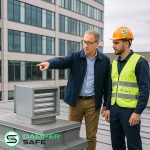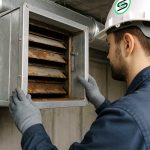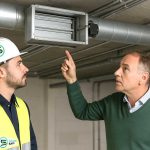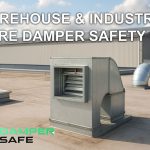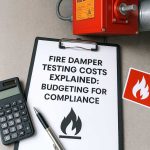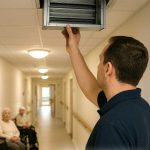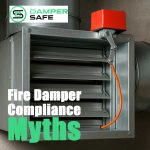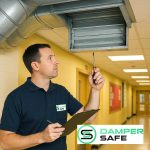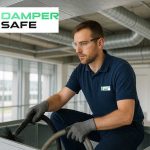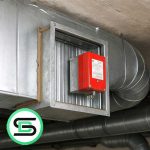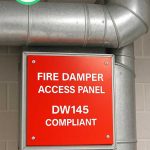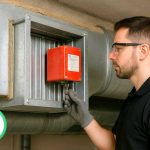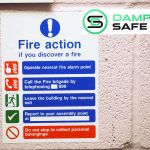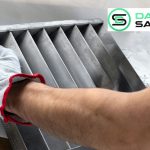Stay compliant with 2024 UK rules. Learn how ventilation system compliance affects safe decommissioning.
By the experts at Damper Safe Ltd
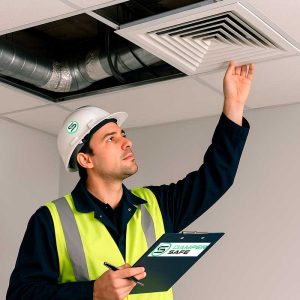
The UK’s drive toward safer, healthier, and more energy-efficient buildings is reshaping how we manage and remove ventilation systems. With updates to the Building Regulations in April 2024 and the publication of BS 9991:2024, there are now new compliance standards to consider — especially when decommissioning old or non-compliant ventilation infrastructure.
In this article, we explore the implications of these regulatory updates, why ventilation system compliance matters more than ever, and how property managers and contractors can avoid costly mistakes by following a proper decommissioning process.
What’s Changing in UK Ventilation Regulations?
April 2024 Building Regulations Update
The April 2024 revisions to the Building Regulations introduced tougher ventilation performance and energy-efficiency requirements, particularly for refurbished buildings and conversions.
Key points:
- Greater emphasis on mechanical ventilation with heat recovery (MVHR) systems.
- Tighter minimum airflow rates to reduce indoor pollutants and mould.
- Enhanced testing and commissioning requirements for new and existing systems.
These updates mean that legacy systems in older buildings may no longer meet ventilation system compliance standards and must either be upgraded or safely decommissioned.
BS 9991:2024 – Fire Safety for Residential Buildings
Published in November 2024, BS 9991:2024 outlines revised fire safety protocols in residential blocks — directly impacting how ventilation and smoke control systems are installed and removed.
Notable changes include:
- Clarified scope for buildings up to 100m in height.
- Additional stairwells required in buildings above 18m.
- Mandatory evacuation alert systems for taller buildings.
Decommissioning outdated ventilation or smoke control systems in high-rise buildings now requires fire safety coordination, especially to ensure compliance with these new British Standards.
Why Ventilation System Compliance Matters
Non-compliant systems not only pose a health or fire risk but can also leave property owners exposed to legal and financial consequences. According to the Health and Safety Executive (HSE), poor indoor air quality is a contributing factor in over 15,000 non-fatal workplace illnesses each year.
Failure to meet updated ventilation system compliance standards can result in:
- Fines under the Environmental Protection Act 1990
- Health & Safety Executive enforcement notices
- Project delays due to failed inspections
- Tenant complaints or legal claims in rented properties
What Does This Mean for Ventilation Decommissioning?
If a ventilation system is no longer compliant with new UK regulations, it cannot simply be ignored or disconnected. Decommissioning must follow a structured, safety-first process, ensuring no residual risks remain and maintaining full ventilation system compliance.
A compliant decommissioning process should include:
- Full compliance assessment – Determine if the system breaches any current ventilation standards.
- Isolation and system switch-off – Safely shut down all electrical or mechanical components.
- Hazard material management – Identify and handle substances such as asbestos, F-gases, or microbial contamination.
- Dismantling and removal – In line with CDM 2015 regulations, ensuring no impact on fire safety systems or passive fire barriers.
- Waste transfer documentation – Record every step in accordance with environmental legislation.
Case Example: Decommissioning in a Refurbished Block of Flats
A recent project managed by the Damper Safe team involved a 12-storey residential building in South London, where the existing ducted ventilation was incompatible with new MVHR requirements. The system had:
- Inadequate extraction flow rates
- Outdated, non-fire-rated ducting
- No smoke control zoning
By following a BS 9991:2024-compliant decommissioning strategy, the outdated system was removed without compromising the fire compartmentation. It also allowed for a safe transition to a compliant solution that passed Building Control inspection on first review, achieving full ventilation system compliance.
How to Stay Ahead: Advice for Building Owners and Contractors
- Review existing systems now – particularly if you’re planning upgrades or repurposing spaces.
- Keep up with regulation timelines – especially Building Regs Part F and L, and BS 9991.
- Engage a specialist – work with accredited contractors like Damper Safe to handle compliance checks, safe removal, and waste documentation.
Why Choose Damper Safe for Ventilation System Decommissioning?
At Damper Safe Ltd, we don’t just remove ventilation systems — we ensure they are taken offline in a safe, compliant, and environmentally responsible way. With deep expertise in fire safety, building regulations, and ventilation system compliance, we are uniquely positioned to support facilities through every stage of the ventilation systems decommissioning process.
- CHAS-accredited safety standards
- CDM 2015-compliant project management
- Expertise in healthcare, education, residential and commercial sectors
- Full audit trail and compliance documentation
Final Word
The recent regulatory shifts are more than just technical updates — they’re a signal that ventilation system compliance is now a priority in UK building management. Decommissioning outdated or non-compliant systems isn’t just good practice; it’s an essential part of maintaining a safe, lawful and efficient built environment.
To discuss your decommissioning requirements or request a ventilation system compliance audit, contact the Damper Safe team today.

